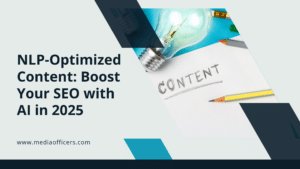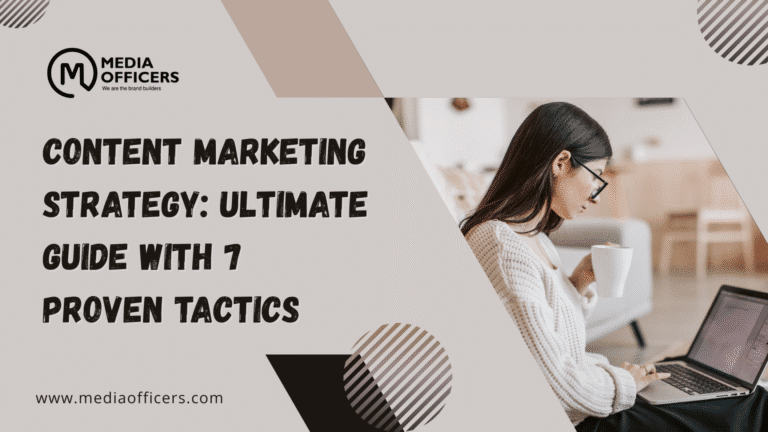The world of digital marketing is changing—and fast. As search engines become smarter, traditional keyword stuffing is no longer enough. To stay ahead in 2025, marketers need to embrace NLP-optimized content—content crafted with Natural Language Processing (NLP) techniques to align with how search engines understand language.
This guide breaks down everything you need to know about NLP in content creation, from semantic search and user intent analysis to topic modeling and schema markup—so you can optimize for rankings and deliver personalized experiences at scale.
What is NLP-Optimized Content?
NLP-Optimized Content refers to web content enhanced using Natural Language Processing techniques that align with how search engines like Google interpret and rank language. Instead of just focusing on keywords, it prioritizes context, structure, sentiment, and intent.
Why It Matters in 2025
- Google’s algorithm (like BERT and MUM) now emphasizes context and relevance, not just keyword matches.
- NLP helps improve readability, relevance, and rich snippet eligibility.
- Users expect personalized, natural, and helpful content—NLP-Optimized Content makes that possible.
Core NLP Techniques to Elevate Your SEO Strategy
1. Keyword Extraction
Go beyond surface-level keywords by extracting semantic variations and related terms that users may search for.
Tools to Use:
- MonkeyLearn
- Google NLP API
- Ubersuggest Keyword Clusters
✅ Action Tip: Use NLP tools to cluster and group intent-based keywords for each piece of content.
2. Sentiment Analysis
Sentiment analysis evaluates the emotional tone of your content—critical for brand messaging and reputation management.
Use Cases:
- Analyze customer reviews and create helpful product copy.
- Adjust tone in content to match target audience preferences.
✅ Action Tip: Maintain a positive or neutral sentiment for informational content to increase trust and shareability.
3. Topic Modeling
Topic modeling helps you identify the themes and subtopics your content should cover.
Popular Models:
- Latent Dirichlet Allocation (LDA)
- Non-Negative Matrix Factorization (NMF)
✅ Action Tip: Ensure your content holistically covers related subtopics to boost relevance for semantic search.
4. Entity Recognition
Named Entity Recognition (NER) helps search engines identify important people, places, products, and terms in your content.
Examples:
- “Elon Musk” (Person)
- “Tesla Model Y” (Product)
- “California” (Location)
✅ Action Tip: Use recognized entities with schema markup to help search engines understand your content context better.
NLP for Personalization & Engagement
5. Content Personalization
Using NLP, you can dynamically tailor content based on user behavior, preferences, and past interactions.
Benefits:
- Higher engagement and lower bounce rates.
- Better email open and click-through rates.
✅ Action Tip: Use tools like Acrolinx or Persado for dynamic, NLP-driven personalization.
6. Readability Enhancement
Google ranks content that is clear, well-structured, and easy to read. NLP-Optimized Content helps you rewrite for clarity and simplicity.
Checklist:
- Short sentences and paragraphs
- Use of active voice
- Grade 8–9 readability level
✅ Action Tip: Use Hemingway App or Grammarly for real-time readability feedback.
7. Lemmatization & Stemming
These techniques reduce words to their base or root form to improve keyword matching and context interpretation.
Examples:
- “Running” → “Run”
- “Better” → “Good”
✅ Action Tip: Include both original and base forms of key terms where it makes sense.
SEO Meets AI: Structured Content and Schema
8. Structured Content Creation
Structuring your content with headings, lists, tables, and sections helps Google parse and index it effectively.
Best Practices:
- Use H2/H3 tags to define hierarchy
- Bullet points for clarity
- Consistent formatting across posts
✅ Action Tip: Structure long-form content using clear subtopics and concise summaries.
9. Schema Markup for SEO
Schema markup improves your chances of being featured in Google Rich Snippets.
Key Schema Types:
- FAQPage
- Article
- HowTo
- Product
- Review
Sample FAQ Schema (JSON-LD):
json {
"@context": "https://schema.org",
"@type": "FAQPage",
"mainEntity": [{
"@type": "Question",
"name": "What is NLP-Optimized Content?",
"acceptedAnswer": {
"@type": "Answer",
"text": "NLP-Optimized Content is web content enhanced using Natural Language Processing techniques to align with how search engines interpret language, context, and user intent."
}
}]
}Machine Learning for Content Marketing
10. Automated Content Tagging
ML models can analyze and tag content based on topics, sentiment, and relevance—saving time and improving consistency.
Tools to Explore:
- AWS Comprehend
- Google Cloud AutoML
- OpenAI GPT API
✅ Action Tip: Use AI to tag blog posts, product pages, or media files automatically to improve content discovery.
Aligning with Search Engines: Semantic Search & Intent
11. Semantic Search
Modern search engines use semantic analysis to match user queries with relevant content—even if keywords don’t match exactly.
✅ Action Tip: Focus on conceptual relevance, not exact keyword repetition.
12. User Intent Analysis
Understanding whether users want information, navigation, or transactions helps you tailor content structure and calls to action.
Types of Intent:
- Informational: “What is content marketing?”
- Navigational: “HubSpot blog”
- Transactional: “Buy SEO tools”
✅ Action Tip: Align each post with a single clear intent for better conversions and rankings.
🔚 Conclusion: NLP is the Future of SEO
If you’re serious about ranking in 2025 and beyond, NLP-optimized content is your golden ticket. From sentiment analysis and topic modeling to structured content and schema markup, using NLP-Optimized Content not only boosts SEO performance but also elevates your content quality and user experience.
Start leveraging these techniques today to future-proof your content and dominate the SERPs.
❓ Frequently Asked Questions (FAQs)
What is NLP-Optimized Content?NLP-Optimized Content is content created using Natural Language Processing (NLP) techniques to improve how search engines understand and rank it. It focuses on meaning, intent, and context—not just keywords.
Why is NLP important for SEO in 2025?Search engines now prioritize content that matches user intent and context rather than just keywords. NLP helps you align with how Google understands language, making your content more relevant and likely to rank higher.
What are some key NLP techniques used in content optimization?Some powerful NLP techniques include:
Keyword Extraction
Sentiment Analysis
Topic Modeling
Entity Recognition
Lemmatization and Stemming
Semantic Search and Intent Analysis
NLP analyzes user behavior, preferences, and sentiment to dynamically adjust content, making it more relevant to each reader. This leads to higher engagement, better time on page, and more conversions.
Can I automate content optimization with NLP tools?Yes! Tools like Google NLP API, MonkeyLearn, Grammarly, and Acrolinx help with real-time NLP-driven insights for tone, structure, keyword usage, tagging, and sentiment.
Does using schema markup help with NLP-optimized content?Absolutely. FAQ, HowTo, and Article schema provide structured data that supports NLP models used by Google, improving your chances of being featured in rich snippets and voice search results.





